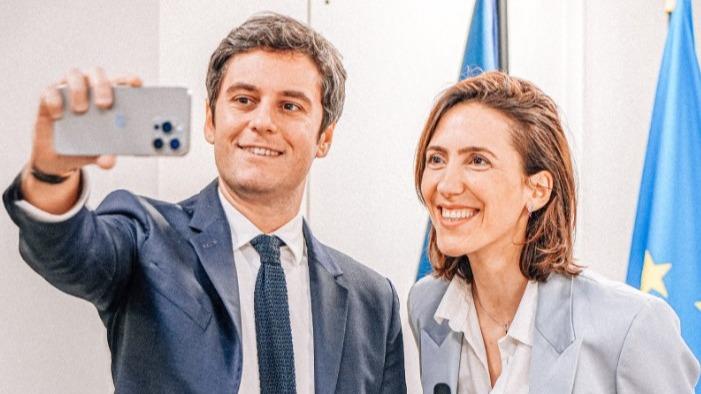One thing is certain: The man wanted attention. There was no pity for him, every technique was right for him. And he became famous. What role vanity played, art historians do not know. But for sure, no one painted so many self-portraits in front of Rembrandt.
Rembrandt astonished, Rembrandt laughing, Rembrandt with his mouth open. Leaning on a stone wall, with shady eyes, with a gold chain. At the easel, while etching, in work clothes: The most important painter of the Baroque of the Netherlands looked so often in the mirror that he became a genius of self-staging.
At the beginning of the 17th century, for example, Rembrandt invented something that connects him with today's selfie generation: self-promotion. He portrayed himself more than 80 times using different techniques. Rembrandt has thus launched itself as a product on the market like no one before him. "Proof of this is that his self-portraits appeared in collections at an early stage, but none of them was found in the inventory of his bankruptcy, so he did not keep them but sold them all," says Rembrandt expert Volker Manuth from Radboud University Nijmegen.
The artist as a brand
With his extraordinary talent, Rembrandt quickly became a brand. In his workshop, his students copied the self-portraits in oil, while the etchings and engravings were designed for reproduction from the outset. Rembrandt had them printed in high circulation. It was his personal flyers, about six by five centimeters in size, which were sold throughout Europe by traveling traders.
photo gallery
11 pictures
Photo gallery: The first DuckfaceOn the occasion of Rembrandt's 350th anniversary on October 4, the art historians Manuth and Marieke de Winkel have now published an opulent catalog raisonné, one of the three volumes contains only self-portraits. Rembrandt - he was the first master of selfies.
It was a matter of sticking out of the crowd. Whether etching at that time or insta-posting today - not every portrait can be used commercially, good craftsmanship is often not enough. Rembrandt was therefore in exalted poses, made a face or opened his eyes. His message: "Here is someone who dares to do something - he pushes the limits of what is feasible - that's how Rembrandt wanted to get into conversation," says art historian Wolfgang Ullrich, author of the book "Selfies". Ullrich certainly sees parallels to photographic snapshots of today: Like Rembrandt with his small flyers, you demand selfie grin for attention and communication.
Confident poses
Rembrandt's strategy of comprehensive self-marketing also shows that artists were no freer in the past than they are today. "Often today culture-critical is scolded about the evil art market, which corrupts the creative," says Ullrich. "That's nonsense - artists had to find ways in the Baroque to get to the public."
Around the year 1640 was the culmination of Rembrandt's fame and accomplishments. At that time, he painted himself in oil, in self-confident poses and costumes of the last century, in the tradition of famous predecessors like Albrecht Dürer or Lucas von Leyden. "The son of a miller and a baker's daughter had become famous and painted himself with Barrett on the head, he modeled after his illustrious predecessors," says Volker Manuth.
Price query time:
29.08.2019, 16:55 clock
No guarantee
DISPLAY
Volker Manuth, Marieke de Winkel
Rembrandt. The self-portraits
Publishing company:
TASCHEN GmbH
Pages:
176
Price:
EUR 50,00
Buy from Amazon Buy from Thalia
Product information is purely editorial and independent. The so-called affiliate links above, we usually receive a commission from the dealer when buying. More information here.
And like his idols, Rembrandt also enjoyed something that could well be called painting bombing : he secretly painted small self-portraits in religious scenes and historical scenes. Albrecht Dürer had also pictured himself in integrated self-portraits - Rembrandt was not only a small flag bearer in the background, but also in action, for example in the painting "The Stoning of Stephen", in the "Prodigal Son in the Tavern" or the "Kreuzaufrichtung" ,
Rembrandt was at times the most successful painter in Amsterdam, but he could not keep financially afloat. Today, his works hang in the largest museums in the world, he became, so to speak, an influencer for many generations after him. With money, however, he often speculated and spent his last decade in utter poverty.
Rembrandt's house and his art collection were auctioned and yet the proceeds failed to cover his enormous debts. His artistic creativity lessened significantly. Nevertheless, he painted some quiet self-portraits. At this stage he was mainly interested in physiognomy and was marked by illness and strokes of fate.
The last selfie was written in his death year 1669 in The Hague. Rembrandt looks tired and lonely in the mirror. In some parts of the painting, the primer shimmers, and historians often call it unfinished. The artist signed it anyway: he was done.








/cloudfront-eu-central-1.images.arcpublishing.com/prisa/YXNLCBNSQNBOHPH3UKP6VN463I.jpg)
